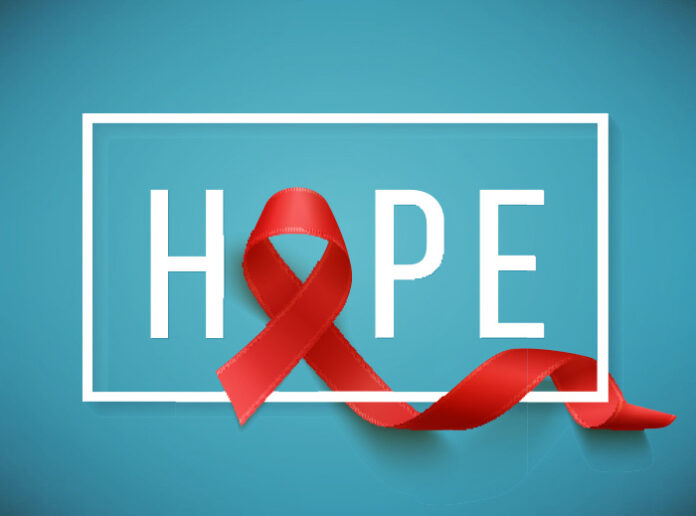Nieuwe studie toont een tweede geval van succesvolle hiv-remissie na een beenmergtransplantatie
Elk jaar sterven er minstens een miljoen mensen door hiv-gerelateerde oorzaken en leven bijna 35 miljoen mensen met HIV. HIV-1 (Human Immunodeficiency Virus) is verantwoordelijk voor de meeste hiv-infecties wereldwijd en wordt overgedragen via direct contact met met hiv geïnfecteerde lichaamsvloeistoffen. Het virus valt cruciale infectiebestrijdende cellen van ons immuunsysteem aan en doodt ze. Er is geen remedie voor hiv. Momenteel kan hiv alleen worden behandeld met medicijnen die het hiv kunnen onderdrukken virus. These drugs have to be taken life long and it is challenging plus a cost burden on the health system especially in low-and-middle-income countries. Only 59 percent of patients of HIV worldwide are receiving Antiretroviral therapy (ARV) and HIV virus is fast becoming resistant from many known drugs which itself is a major concern.
Beenmerg transplantatie (BMT) is a treatment used for leukemia, myeloma, lymphoma etc. Bone marrow, the soft tissue inside bones, makes blood-forming cells including the infection fighting white blood cells. A bone marrow transplant replaces unhealthy marrow with a healthy one. In the first case of successful HIV remission, an HIV-infected individual called ‘Berlin Patient’ who later revealed his name received a bone marrow transplant a decade ago when he was targeted to treat acute leukemia. He received two transplants along with total body irradiation which led to long-term HIV kwijtschelding.
In een nieuwe studie gepubliceerd in NATUUR led by UCL and Imperial College London, the only second person has been shown to experience sustained remission from HIV-1 after a bone marrow transplant and stoppage of treatment. The anonymous adult male patient from UK was diagnosed with HIV infection in 2003 and was on antiretroviral therapy treatment since 2012. He was subsequently diagnosed with Hodgkin’s Lymphoma in the same year and he underwent chemotherapy. In 2016, he was given stem cell transplant from a donor who carried a genetic mutation which prevents expression of a most commonly used HIV receptor protein called CCR5. Such a donor is resistant to HIV-1 strain of the virus which specifically uses CCR5 receptor and thus the virus now cannot enter host cells. Since chemotherapy kills cells which are dividing, HIV could be targeted. From this understanding if one’s immune cells are replaced by cells which do not have CCR5 receptor, HIV can be prevented from rebounding after the treatment.
De transplantatie werd uitgevoerd met kleine bijwerkingen, zoals een milde complicatie die vaak voorkomt bij transplantaties waarbij de immuuncellen van de ontvanger worden aangevallen door donorimmuuncellen. De antiretrovirale behandeling werd 16 maanden na de transplantatie voortgezet voordat werd besloten de behandeling stop te zetten om de remissie van HIV-1 te evalueren. Na dit bleef de virale belasting van de patiënt ondetecteerbaar. De patiënt bleef in remissie na 18 maanden nadat de antiretrovirale therapie was onderbroken omdat de immuuncellen van de patiënt niet in staat waren om de cruciale CCR5-receptor te produceren. Deze totale duur is gelijk aan 35 maanden na de transplantatie.
This is a second case of a patient exhibiting sustained remission of HIV-1 following a bone marrow transplant. One important difference in this second patient being that ‘Berlin Patient’ had received two transplants along with total body irradiation while this UK patient received only a single transplant and underwent less aggressive and lesser toxic approach of chemotherapy. Mild complications of similar nature were seen in both patients i.e. graft versus host disease. Achieving success in two different patients points towards developing strategies based on preventing CCR5 expression which might even cure HIV.
Authors state that they are monitoring the patient’s condition and cannot say with affirmation yet if he has been cured of HIV. This may not be a generalized appropriate treatment for HIV because of adverse effects and toxicity of chemotherapy. Also, bone-marrow transplants are expensive and carry risks. Nevertheless, it is a better approach with reduced intensity conditioning and no irradiation. Research could also focus on knocking out the CCR5 receptor using gene therapy in people with HIV.
***
{U kunt de originele onderzoekspaper lezen door op de DOI-link hieronder in de lijst met geciteerde bron(nen) te klikken}
Bron (nen)
1. Gupta RK et al. 2019. Hiv-1-remissie na CCR5Δ32/Δ32 hematopoëtische stamceltransplantatie. Natuur. http://dx.doi.org/10.1038/s41586-019-1027-4
2. Hütter G. et al. 2009. Langetermijncontrole van HIV door CCR5 Delta32/Delta32 stamceltransplantatie. N Engl J Med. 360. https://doi.org/10.1056/NEJMoa0802905
3. Brown TR 2015. Ik ben de Berlijnse patiënt: een persoonlijke reflectie', AIDS-onderzoek en menselijke retrovirussen. 31(1). https://doi.org/10.1089/aid.2014.0224






































